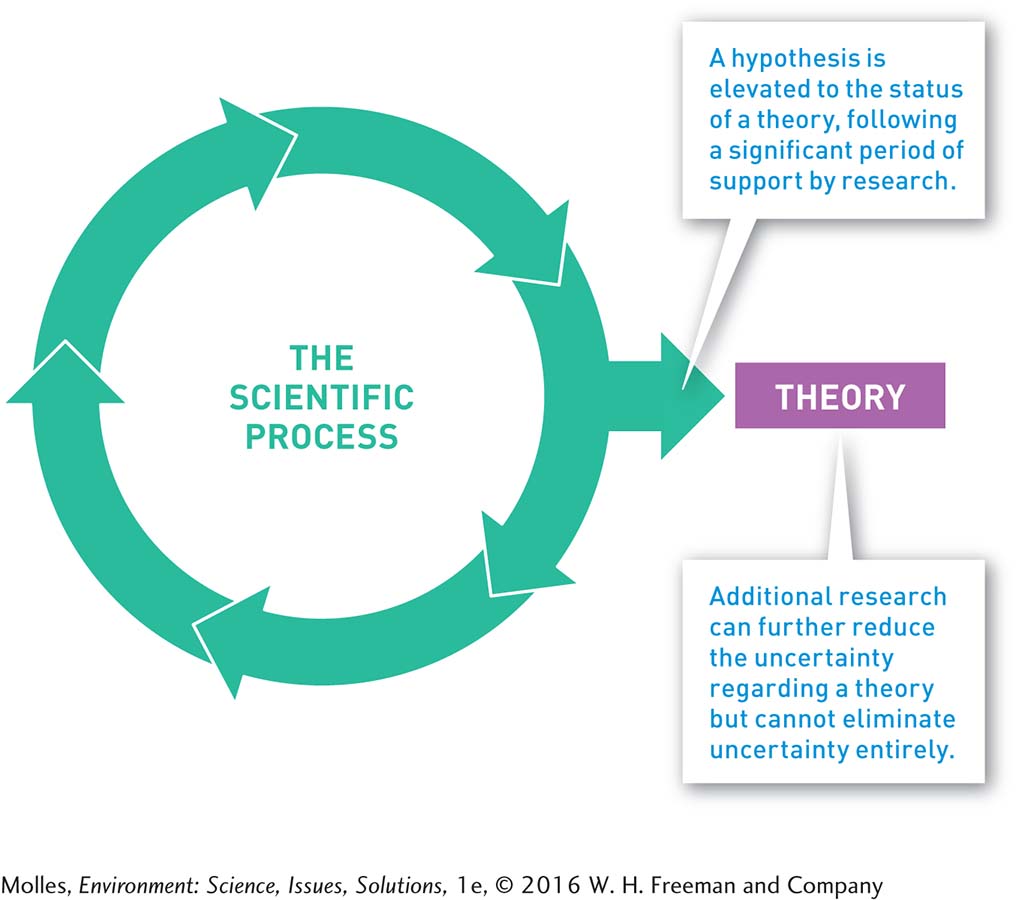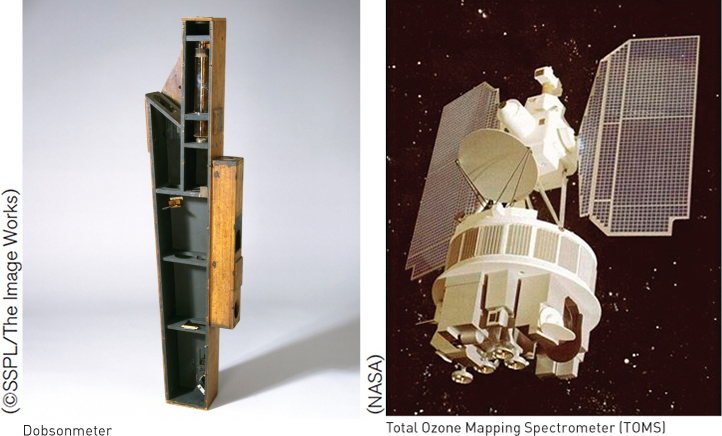1.3 Scientific evidence can reduce uncertainty about natural phenomena
Even after conducting a successful experiment to test a hypothesis, scientists may still have an incomplete picture of a natural phenomenon. For example, the scientists at the Duke experimental forest proposed that higher levels of atmospheric CO2 would increase growth of forest vegetation. Indeed, they found that root growth increased in their experimental plots. Case closed, right? Not exactly. While one well-
theory A scientific hypothesis that has withstood sufficient testing—
At some point in the history of the investigation of a phenomenon, scientists may develop a theory (Figure 1.10). A theory is a general explanation of a phenomenon that has been supported by repeated observation, experimentation, and modeling of specific hypotheses. Some of the most famous and well-

Sources of Scientific Uncertainty
There are many sources of scientific uncertainty. Looking back at the story of the discovery of the ozone hole, we can see how science gradually reduced uncertainty about this phenomenon. The first source of scientific uncertainty is simply how much we already know about a system. In building their model of CFCs, the chemists Molina and Rowland acknowledged a number of areas of uncertainty, including a lack of knowledge of the rates at which molecules moved through the stratosphere and the rate at which chlorine produced in the stratosphere would be removed. Because of these uncertainties and others, Molina and Rowland could not predict when environmental problems due to depletion of stratospheric ozone might begin.
A second potential source of uncertainty is measurement error, as a result of either human or instrument error. For instance, when the British Antarctic Survey first began recording low levels of stratospheric ozone with their Dobsonmeter (Figure 1.11), they considered the possibility that the machine was malfunctioning. To eliminate this possibility and reduce uncertainty, the team sent for a backup Dobsonmeter, which confirmed the first set of results.

The level of certainty can also be limited by the methods used in a scientific study. The original report on ozone depletion was limited to the area of the atmosphere that could be sampled by a Dobsonmeter from the Antarctic base. Consequently, the extent of the atmosphere that was depleted of ozone was uncertain until NASA conducted satellite-
Precautionary Principle
Because uncertainty is characteristic of science, scientists must cultivate a critical view of their disciplines, their hypotheses, prevailing theories, and scientific understanding in general. This skepticism, however, is a double-

How should environmental regulation based on the precautionary principle be influenced by potential harm to health and environment and level of scientific uncertainty?
precautionary principle Advises that precautionary measures should be taken to protect human or environmental health, even if some potential threats are not fully understood scientifically.
Science cannot eliminate uncertainty about nature entirely, which is why we often fall back on the precautionary principle. At a 1998 conference at the Wingspread Conference Center in Racine, Wisconsin, 32 environmental scientists expressed the principle as follows: “Where there are threats of harm to human health or the environment, precautionary measures should be taken even if some cause and effect relationships are not fully established scientifically.” You may have heard the precautionary principle as a piece of folk wisdom: “Better safe than sorry.”
The precautionary principle shifts the burden of proof from those supporting environmental protection to those recommending actions that may be harmful or may result in harm if no action is taken. However, because such a position may hurt businesses or other stakeholders, it often receives significant opposition. For instance, measures to control ozone-
Think About It
A study similar to the one at the Duke experimental forest was done at the Oak Ridge National Laboratory in Tennessee. The Oak Ridge study also resulted in higher root growth rates in response to elevated CO2 concentrations, but another study done in Switzerland did not. Do the differences in results make any of the studies invalid? What do scientists generally do when faced with conflicting results such as these?
What criteria should be used to determine when to follow the precautionary principle? Are there situations in which the precautionary principle should not be followed?